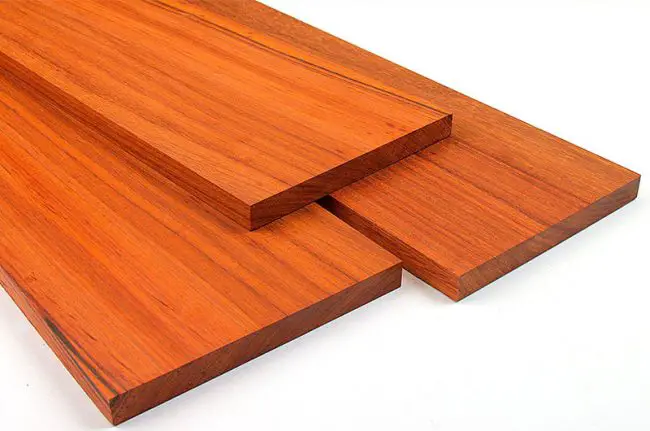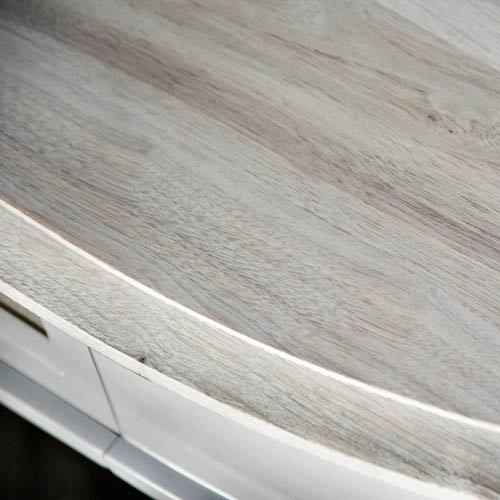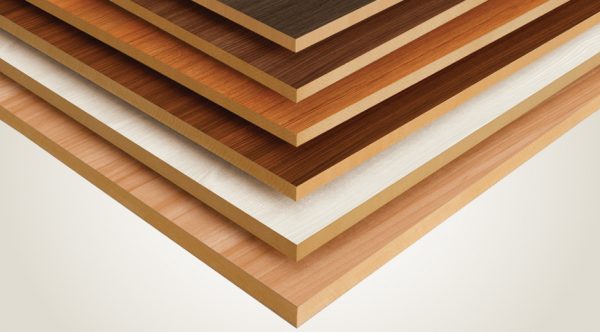As its name implies, insulator is a material that separates the wood substrate from the finish, acting as a barrier. It is applied to both wood and wood-based panels such as MDF. Polyurethanes, waterborne products and special products such as UV-cured products can be used as insulators. Insulators are used in several situations and I will tell you when and why.
First of all, the insulator is used for tannin essences. The tannin in wood can change the color of the bath or varnish or prevent the products from drying out (it influences the chemical reaction between the components).
To give you an idea of just how important the insulator is, I'll tell you about an "old" story from a factory where arte povera furniture poplar for export Italy. Someone wanted garden furniture made of acaciaThey asked me to help them, not being familiar with such finishes. Without thinking about how tannic the acacia is, I started to apply white primer to the acacia slats, typical of garden furniture. All the slats were strung on 2 wooden sleepers, laid parallel. I started spray application and hadn't even gotten halfway through when I saw the first pieces start to turn green. Quite simply the tannins and dyes from the acacia were migrating into the primer water (it was a water soluble product). I stopped, sanded everything down to the wood, then applied a specially formulated acacia insulator, then applied the finish with no further problems.
I mentioned that the insulator was specifically for acacia because it is a more difficult wood. There are woods with a high content of tannins, oils, colorants, salts, such as exotic woods, which need special insulators. This is not to say that there is an isolator for every species. But there are stronger isolators specifically formulated to block all substances that tend to migrate.

photo source: woodworkingssource.com
Tanned wood should be insulated not only because it changes the color of the finish. Certain substances in the wood can even influence the chemical reactions. Therefore, when finishing with polyester productsThe tannins, which are sensitive to such influences, are first insulated with a polyurethane insulator.
Insulators are also used for chemically bleached wood. Often the substances used can influence the subsequent finish by changing its color, slowing or preventing chemical reactions. For chemically bleached wood it is also recommended to use a solvent acrylic finish, very resistant to such substances and yellowing.

photo source: oaktimberflooring.com.au
But insulation is not only used for wood. When finishing MDF, an insulator is often recommended as a first coat. This is very useful if the MDF is more porous and absorbs more primer. Sometimes small pimples are visible in the film which do not appear if the primer is applied to veneered or caulked MDF, or glass. They are the result of air escaping from the MDF board. If a first coat of sealer is applied the problem is eliminated.
The insulator is also applied to mechanically machined areas of MDF: edges, milling, CNC patterns. Its use results in a more beautiful film and reduced consumption of primer.
In the case of MDF or laminated chipboard, an insulator can be used to increase the adhesion of the finish to the laminated paper used. Various finishing materials can then be used without fear that they will peel off at the slightest mechanical shock.

Insulators are not products to be used on every finish, but when recommended they are very useful and the recommendation should be heeded. Wood, depending on where it has grown, environmental conditions, etc., can contain all sorts of more or less known substances and you cannot always predict how they will react. This is why blocking them in prevents finishing problems and makes it possible to obtain a good quality film.




































Interesting article, as usual. Congratulations!
I have a question to you, I have searched the net for "Wood Insulators", but I get all kinds of links that are not related to the article and the technique described. Under what name are they commercially available, or are they only found in the industry?! Can you tell me some names of insulators? Thanks.
Indeed, I don't think you'll find it commercially available under this name. The ones I talk about in the article are industrial products and are supplied by manufacturers and distributors of wood varnishes and paints. DIY products are made in such a way that application is simple and in a few coats, often with 2 in 1 or even 3 in 1 products. I think you should look for exotic wood products.
All the best!
And in the case of solid wood, a layer of insulation is applied before the bait? Or is it only recommended if painting opaque?
Thank you
It can also be applied to solid wood if it is tannic. It is especially recommended for exotic wood, but we also have new tannin essences. We have already mentioned salcam and sometimes oak (more on the outside or if special finishes are used that may interact with the tannin in the oak). If you apply it before bathing, the insulator should be very thin, so it doesn't clump. The purpose is to get into the wood and lock the tannin in there.
I applied a layer of lazur to some laminated beech stairs
Unfortunately on the rounded corners I have a blackening effect (I think it absorbs more grease).
How can I avoid this?
Thank you,
One layer is still too little, especially in the parts where absorption is higher. There the protection has been reduced and mildew and oxidation from the sun has occurred. I recommend applying a thinner first coat, so that it gets into the wood. After the cleaning apply another coat, this time thicker. The two coats should be applied on the same day, otherwise they will not adhere to each other. If you leave the application of the second coat for the second day, you should sand it lightly beforehand with a fine abrasive sponge (or sandpaper 280-320). Good luck!
Hello,
please help us with an advice on the insulation of pine resin, resin that appears throughout the element not just at the knot appearing after finishing white areas. Thanks
Hello.
It's quite complicated with resin. It was probably a big bag of resin (or still is). If it was - and this is the happy case - wash the item with thinner. With a rag dipped in nitrocellulose thinner (or industrial alcohol) go over the whole area a few times. Do this simultaneously with a 120-150 grit sanding. Allow to dry and then apply the finish.
You can also try applying a polyurethane or water-based sealant that locks the resin inside. If it's a big bag it will also come out through the insulator. The only solution in this case is to remove the resin bag.
All the best!
Hello, can we use this treatment on old furniture after the old paint has been cleaned down to the wood?
Hello.
I don't think that's necessary. The system used for cleaning old furniture I don't think was as aggressive as chemical wood bleaching.
After removing the old varnish, wipe off with thinner, allow to dry and apply the desired finish.
All the best!
Don't forget to subscribe to the printed Wood Magazine! For only 58 lei/year you can find out news in the field, discover craft ideas or trade secrets. We remind you that the content in the printed magazine is different from the one on the website. Details in the link below.
Thank you!
https://revistadinlemn.ro/product/abonament-revista-din-lemn/